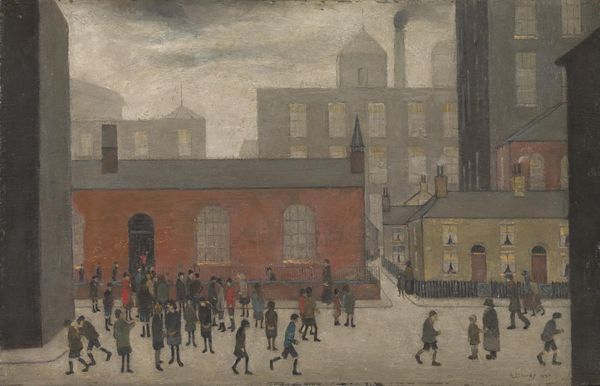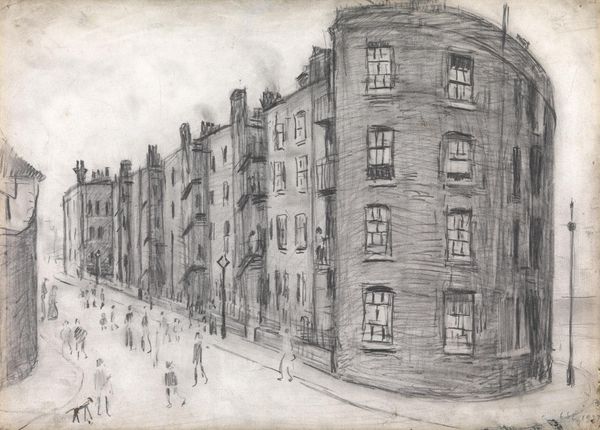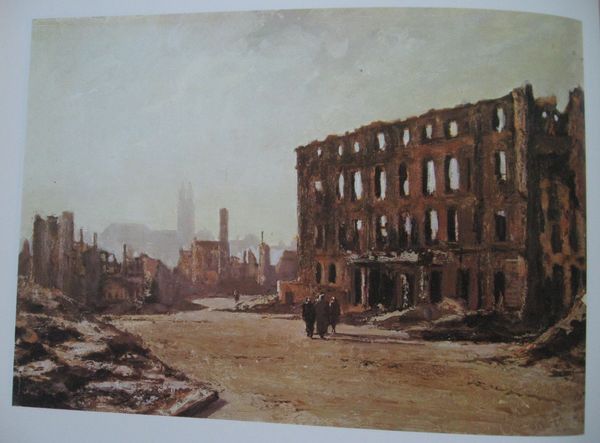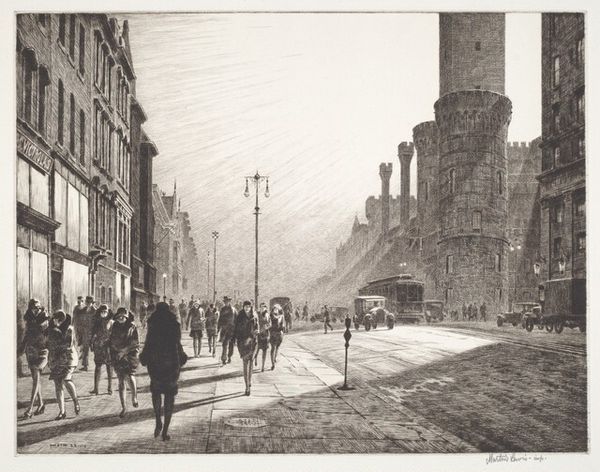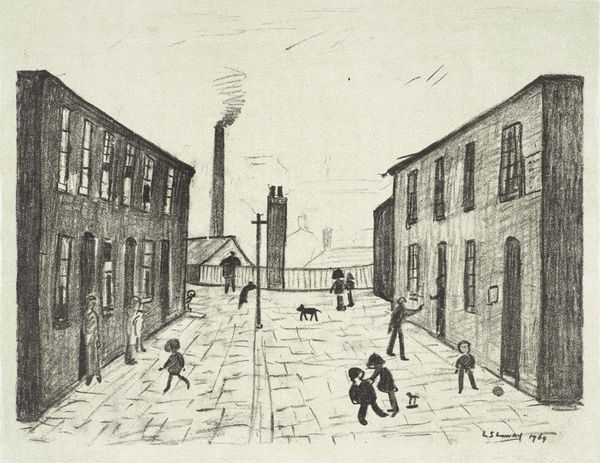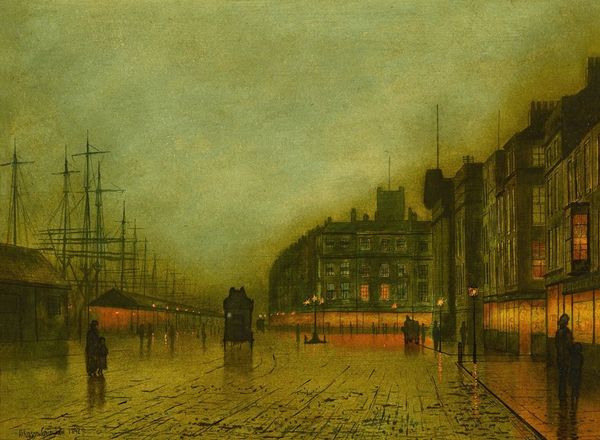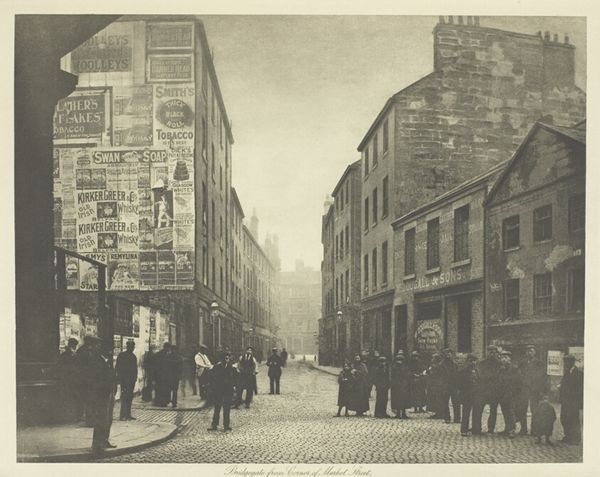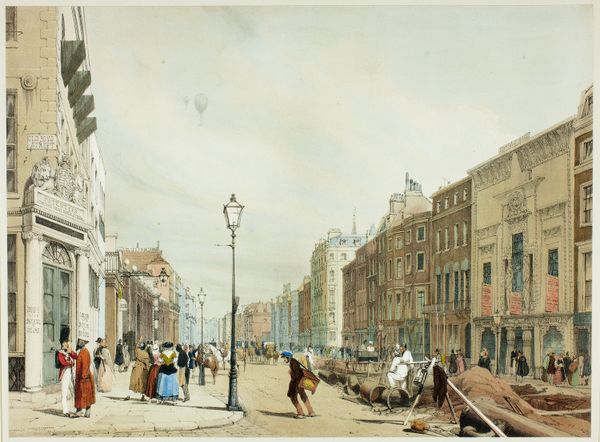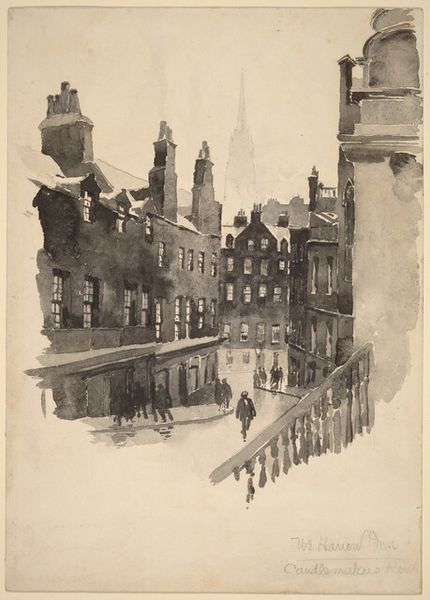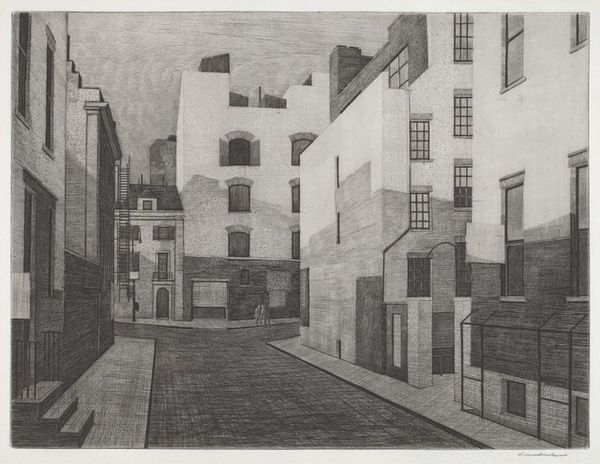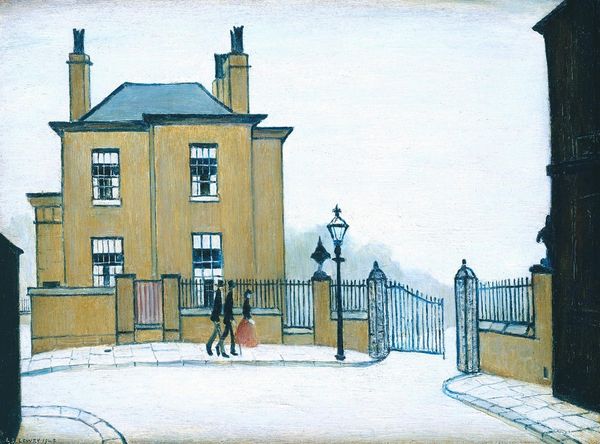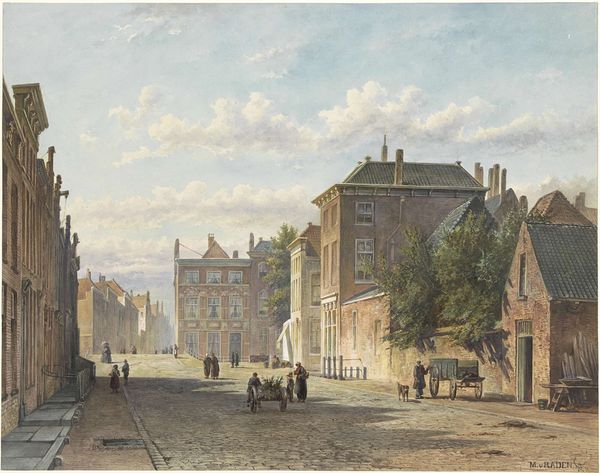
Dimensions: support: 432 x 533 mm
Copyright: © The estate of L.S. Lowry | CC-BY-NC-ND 4.0 DEED, Photo: Tate
Curator: L.S. Lowry’s canvas, "Dwelling, Ordsall Lane, Salford," presents a characteristic scene from the industrial north of England. Look closely at the materiality of his paint application. Editor: It's bleak, isn't it? The impasto evokes a gritty realism, the very feel of a damp, cold day. The people seem dwarfed by the architecture. Curator: Yes, but observe how even these simplified figures carry such weight. Notice the repetition of the window motif - it's a symbol of both confinement and potential escape. Editor: You're right. There's a rhythm in the grid-like arrangement of the windows. The painting's composition reinforces this feeling of being trapped, yet teeming with life. Curator: Ultimately, this image speaks to the enduring power of community, even amidst urban bleakness. Editor: It's a poignant snapshot, a visual poem about the human condition.
Comments
tate 6 months ago
⋮
http://www.tate.org.uk/art/artworks/lowry-dwelling-ordsall-lane-salford-n05003
Join the conversation
Join millions of artists and users on Artera today and experience the ultimate creative platform.
tate 6 months ago
⋮
Lowry was fascinated by buildings. For him they evoked the lives of their occupants. He felt that 'A country landscape is fine without people, but an industrial set without people is an empty shell. A street is not a street without people... it is as dead as mutton'. In the 1920s he frequently drew in Salford: 'There were special parts I liked, a bit Georgian, older than the rest. My favourite places were the houses built around factories. They just attracted me more than the others.' Revisiting Orsdall Lane in the 1960s Lowry remembered that as he had drawn in front of the dwelling, 'scores of little kids who hadn't had a wash for weeks would come and stand around me. And there was a niff, too.' Gallery label, September 2004
